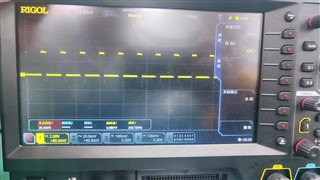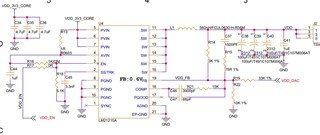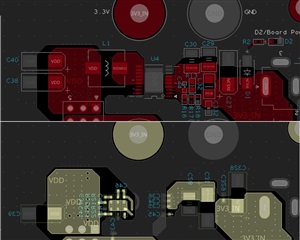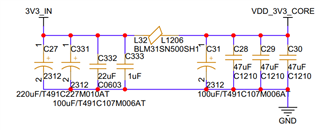Other Parts Discussed in Thread: TPS62873-Q1
Dears:
when input=3.3V, output use DAC to do ADJ, customer found that LM21215A work frequency will change to 250KHz and output voltage ripple will up to 50mV.
we tried to remove capacitor C37 showing in schematic and work frequency will change to 500KHz which is standard frequency.
Could you pl
 ease help check the root cause ? Thanks .
ease help check the root cause ? Thanks .



